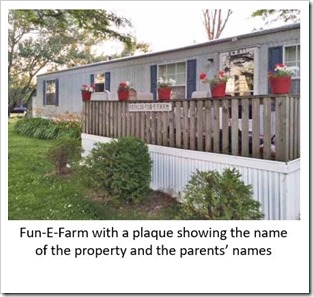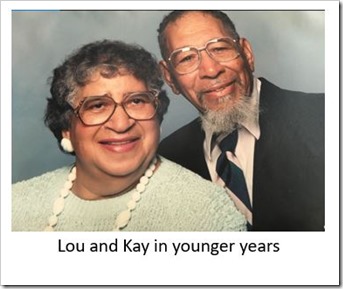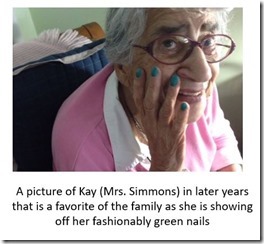To insiders, the North Country of upstate New York refers to the 1000 Islands region in Lake Ontario and the St. Lawrence River, which form a natural border between the U.S. and Canada, and Adirondack Park to the east which is the largest national park in the contiguous 48 states.
The North Country has a long history of family. At the turn of the 20th century, wealthy families like the Vanderbilts and the Rockerfellers built “Great Camps” in the Adirondack mountains to experience nature in style and to entertain presidents and royalty.
In the early 1900’s, a love story of epic proportions came to life when the proprietor of the famous Waldorf Astoria in New York City built a castle for the love of his life – his wife Louise, on appropriately re-named Heart Island in the St. Lawrence River. When Louise died unexpectedly after only four years of summering on the island, the heartbroken George Boldt halted all construction and never returned to his monument of love. For seventy-three long years, the beautiful castle and grounds were abandoned and seemed to grieve with him and became little more than a ghostly reminder of a great love.
In the 1950’s, a young American family also became enchanted with this region and continued the tradition of family retreats to the North Country. Katherine and Louis Simmons camped on the Canadian side of the St. Lawrence River for a few years until Louis’ Uncle Harold invited the family to make use of his campsite on a peninsula in Chaumont Bay.
 Located an hour and a half north of Syracuse and three hours west of Lake Placid in the Adirondack Mountains, Chaumont Bay is one of the largest fresh water bays in the world and offers excellent fishing in an unspoiled farming oasis far from its downstate neighbors. The American side of Lake Ontario and the St. Lawrence River were settled by farmers, fishermen and craftsmen dating back to the 1800’s. The Thousand Islands area is rich with historic battlefields and lighthouses that stand sentinel over the many islands. The harshness of a winter climate surrounded by a river, a lake and mountains to the east contributed to the hardiness of the residents. Tourism is a major industry during the summer when the local population swells with vacationers from Canada and the U.S.
Located an hour and a half north of Syracuse and three hours west of Lake Placid in the Adirondack Mountains, Chaumont Bay is one of the largest fresh water bays in the world and offers excellent fishing in an unspoiled farming oasis far from its downstate neighbors. The American side of Lake Ontario and the St. Lawrence River were settled by farmers, fishermen and craftsmen dating back to the 1800’s. The Thousand Islands area is rich with historic battlefields and lighthouses that stand sentinel over the many islands. The harshness of a winter climate surrounded by a river, a lake and mountains to the east contributed to the hardiness of the residents. Tourism is a major industry during the summer when the local population swells with vacationers from Canada and the U.S.
The Simmons family enjoyed the rustic character of their new summer home in this idyllic setting – lovingly named the “Fun-E-Farm”. Over the years, they added to the charm of the place by “junking” expeditions to local garage sales, flea markets and antique stores.
Each summer, the family planted trees and flowers, made the usual repairs and enhancements and generally enjoyed being part of the North Country community. They made friends with the regulars – Mabel who lived down the road, the Johnsons who lived nearby, Gretchen and Bill who were boating partners. The Simmons children had the great fortune to grow up in this community summer after summer.
Although they were not a wealthy family, they enjoyed a comfortable standard of living back home in Rochester, NY. Louis worked hard in his job as a mason and Katherine contributed to the family’s finances by working as a secretary to a prominent doctor when the children reached school age. Kay and Lou Simmons were admired for their personal dignity and the strong values that they imparted to their children in addition to the social standing that they enjoyed. Their daughters were debutantes; their sons modeled themselves after Louis’ example of a decent man and good husband and father.
Like all good neighbors in The North Country, they supported the community by engaging local workers when the Fun-E-Farm needed repairs and maintenance. As Katherine and Louis got on in years, they turned the duties of maintaining their summer home over to their two youngest children, then in their forties. Like their parents before them, Victoria and Steve and his wife were solidly entrenched in the area and were fiercely protective of the still mostly rural community. 
In June of 2002, daughter Victoria called the local water provider, who had been making deliveries there for close to twenty years, to arrange for the typical seasonal delivery. Although properties in this area frequently have a property address, it’s more common to refer to the location as “on Fire Rd X” or “down the road from the X farm” or some other landmark.
With one question, the façade of belonging after decades living in the area was painfully revealed to Victoria as she tried to describe the physical location of their home. She was totally unprepared when he responded, “Oh, you mean in the "colored section!” The word colored rolled off his tongue easily and probably with no ill-intent but, to Victoria, it was a harsh reminder of the realities of being black in America. Being relegated to a “section”, like the back of the bus or whites-only drinking fountains implied that “coloreds” live in specific areas while whites could live everywhere else.
It was 2002 but that one comment rolled back the years to a night in 1956 when Katherine and Louis were denied lodgings on the American side of the border because of their skin color and were forced to seek lodging in Canada, which was more welcoming but much further away. The Simmons family did not return to Chaumont Bay for 15 years. 
It is interesting to note that of the 2 main fire roads on this stretch of county road, one is inhabited almost exclusively by whites and one is inhabited almost exclusively by blacks. While that may or may not be a conscious decision by the current or prospective owners, it stands as a social commentary.
An illustration of the separation that still exists occurred just a few years ago when I called a prominent local realty company that had one of the abandoned properties listed for sale. I told the agent that my husband and I were so interested because we knew the area very well, had been coming to the area every summer for some time, and were friends with the families that still maintained a presence in that immediate area. Despite receiving that information, the agent stated, several times, that the homes in the area were owned by African-Americans. I asked her why she thought it was necessary to tell me the race of the people in that area once, let alone several times, but it was evident she assumed I was not African-American and that I might feel differently about my purchase if I wasn’t forewarned. Why should the race of future neighbors be important?
The irony of these comments is that the members of the Simmons family, as well as other African-American families, had been landowners in this area before some of the neighboring white families discovered the area and began buying up pieces of waterfront paradise. This remained a small but active neighborhood made up of African-American families, mostly from Rochester. Although it is unlikely they were able to completely avoid the racism that impacted their lives, they enjoyed many happy years in their somewhat isolated little area.
The years brought changes to the little neighborhood on the Fire Roads. Many of the original inhabitants are elderly now and infrequently make the 3-hour trip from Rochester. Grown children and grandchildren visited sporadically over the years and some of the properties fell into disrepair and stood empty and lonely.
However, there are new signs of life in the area. Relatives of some of the original families have purchased properties nearby; some of the children and grandchildren have “rediscovered” the area and breathed life into it once more. Regardless of careless comments or misguided intentions, the fact remains that the African-American families that have journeyed to the North Country for close to fifty years did not create a colored section; they created a community.
By Beth Campagno
Beth Campagno and her husband live near Rochester, NY but they spend as much time as they can at their "summer home" near their friend Victoria and the Fun-E-Farm. They can be found cycling, kayaking, exploring or just relaxing with family and friends! Beth provides management support services to small businesses and start-ups. She has also been fortunate enough to begin her "second act" by pursuing her love of writing and currently writes for an online parenting and lifestyle magazine -www.leslittles.com.